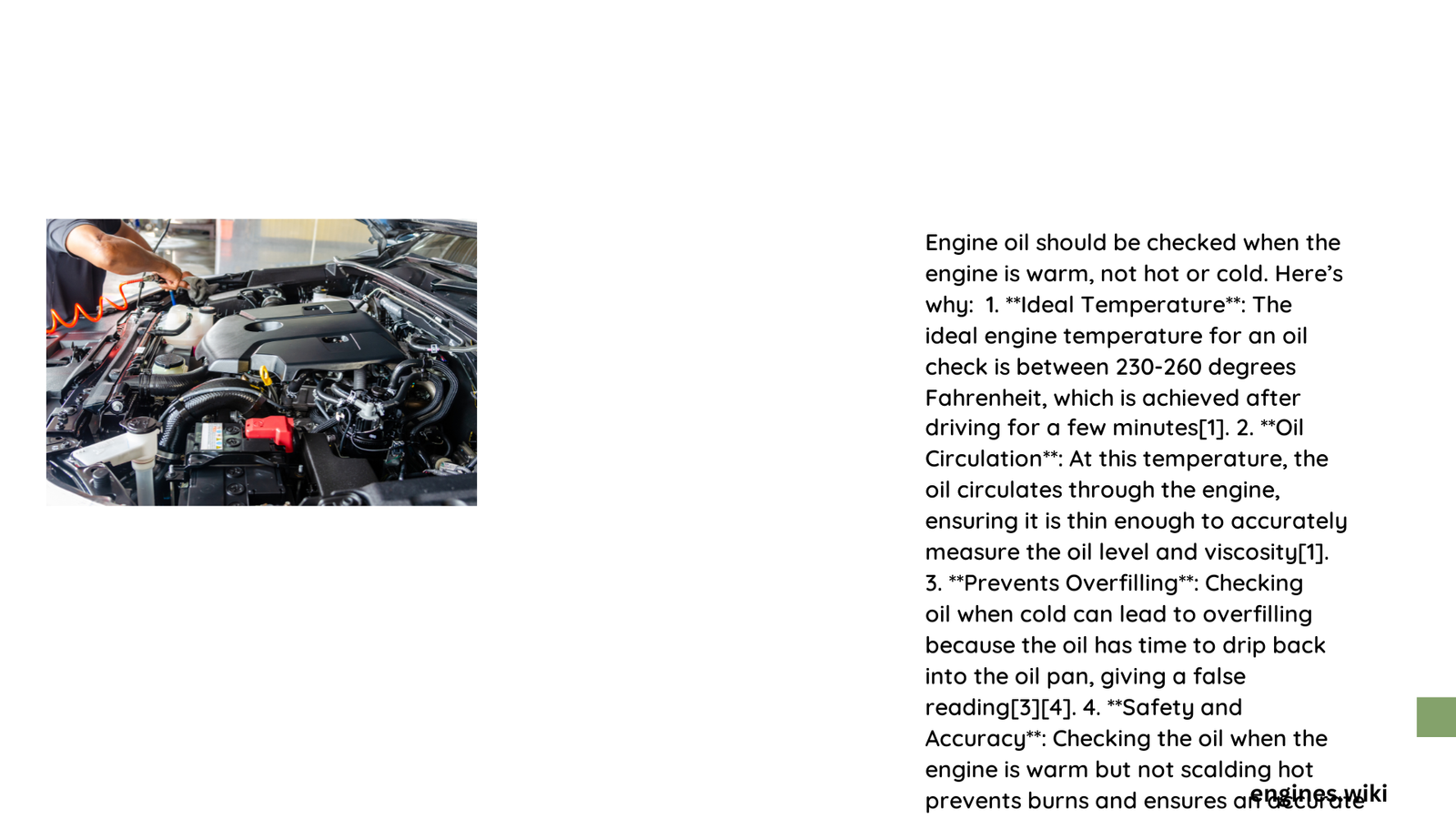Engine oil temperature plays a critical role in obtaining an accurate oil level reading. Checking engine oil requires understanding the nuanced relationship between oil viscosity, engine temperature, and measurement precision. Vehicle owners must navigate the delicate balance of temperature to ensure proper engine lubrication and maintenance, avoiding potential damage from incorrect oil level assessments.
Why Temperature Matters for Oil Checking?
What Happens to Oil at Different Temperatures?
Engine oil behaves differently based on temperature, which significantly impacts its viscosity and measurement accuracy. Here’s a comprehensive breakdown:
| Temperature Range | Oil Behavior | Measurement Accuracy |
|---|---|---|
| Cold (Below 100°F) | Thick, Sluggish | Less Accurate |
| Warm (230-260°F) | Optimal Flow | Most Accurate |
| Hot (Above 275°F) | Extremely Thin | Potentially Misleading |
Key Factors Influencing Oil Level Measurement
- Viscosity Changes
- Cold oil becomes thicker, potentially giving false low readings
- Hot oil becomes extremely thin, potentially causing inaccurate measurements
-
Ideal temperature allows oil to settle naturally
-
Safety Considerations
- Avoid checking oil immediately after driving to prevent burn risks
- Wait 10-15 minutes after engine shutdown for optimal checking conditions
How to Check Engine Oil Correctly?
Recommended Checking Procedure
- Preparation
- Park vehicle on level ground
- Ensure engine is warm but not hot
- Wait 10-15 minutes after driving
-
Use clean, lint-free cloth for dipstick cleaning
-
Checking Process
- Open hood safely
- Locate dipstick
- Usually marked with bright-colored handle
- Often near engine’s front side
- Pull out dipstick completely
- Wipe clean with lint-free cloth
- Reinsert fully
- Remove and check oil level markings
What Are the Risks of Incorrect Oil Checking?
Vehicle owners risk several potential issues when checking oil at inappropriate temperatures:
- Inaccurate Readings
- Overfilling engine oil
- Underfilling engine oil
-
Misinterpreting actual oil levels
-
Potential Engine Damage
- Insufficient lubrication
- Increased mechanical wear
- Reduced engine performance
Expert Recommendations
Professional mechanics suggest:
– Check oil every 1,000 miles
– Use consistent temperature approach
– Always check on level surface
– Compare readings against manufacturer specifications
Technical Insights on Oil Viscosity
Modern synthetic oils offer more temperature stability compared to conventional oils. Multi-grade oils like 5W-30 provide:
– Better cold-start performance
– Improved high-temperature protection
– More consistent viscosity across temperature ranges
Final Technical Guidance

The optimal time to check engine oil is when the engine is warm but not hot – typically 10-15 minutes after driving. This allows oil to settle while maintaining appropriate viscosity for accurate measurement.
Pro Tip
Invest in a high-quality digital oil dipstick or infrared thermometer for precise temperature monitoring during oil checks.
